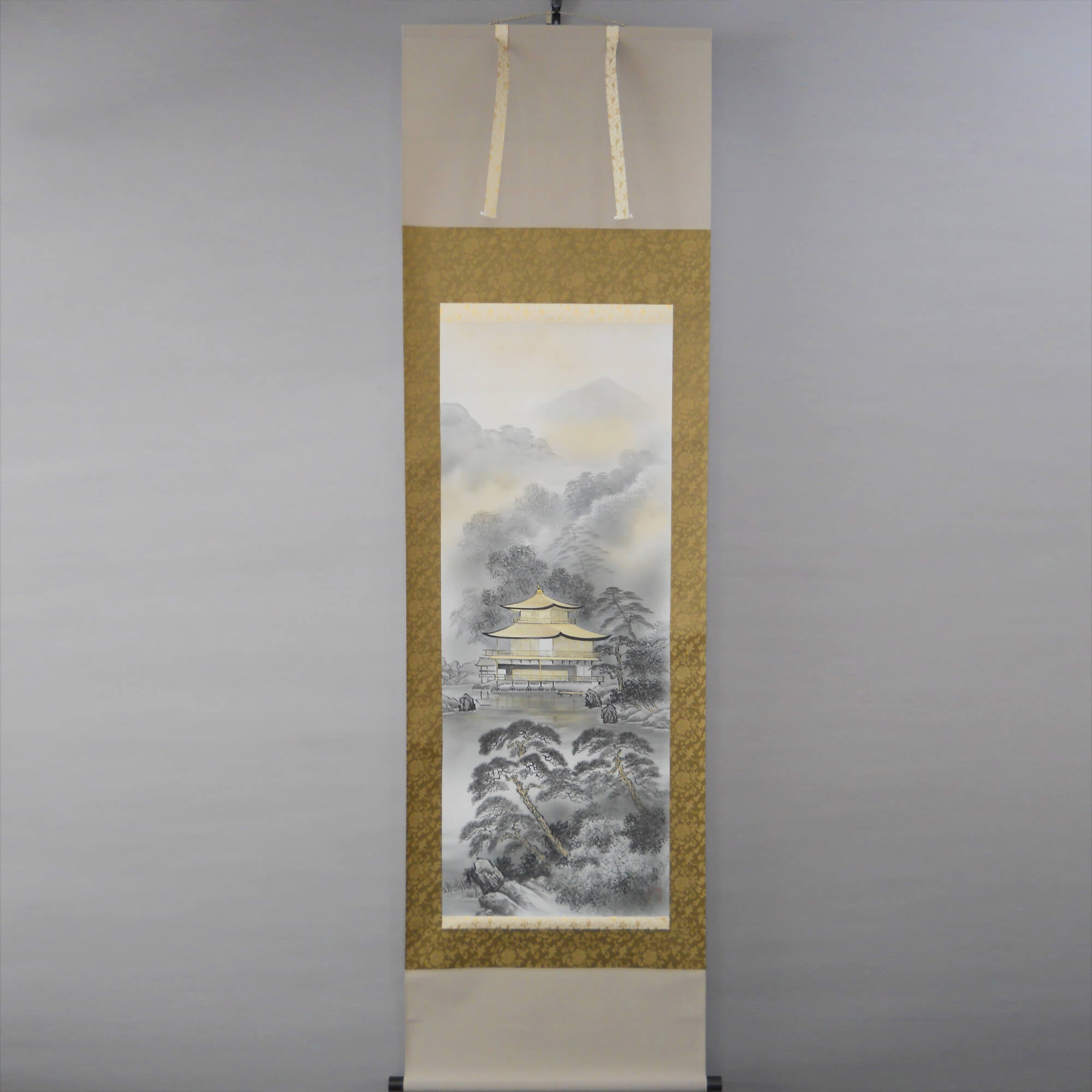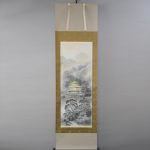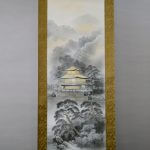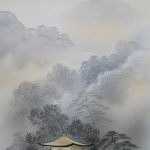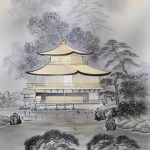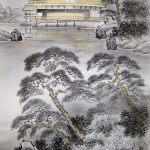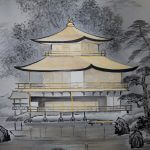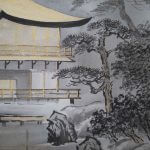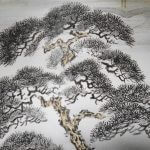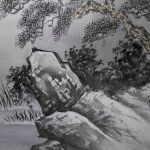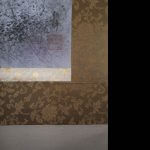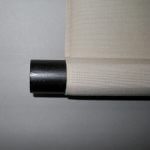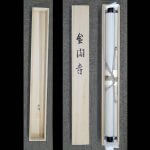Kakejiku Hanging Scroll: Landscape Painting : Kinkaku-ji Temple / Kawamura Kanpō - Kinkaku-ji
- Product ID
- B0044
- Name
- Kawamura Kanpō
- Profile
A Japanese-style painter. In 1935, born in Aichi pref. Member of the Tōyō Bijutsukai. Pupil of Ōhashi Suiseki. A frequent prize winner. Specialized in Buddhist paintings, landscape paintings and animal paintings.
- Size
- 600mm x 1905mm
- Roller End Material
Redsandalwood- Material of the Work
- Silk
- Stock Condition
- Sold out
- Description
The name of Kinkaku-ji means the “Temple of the Golden Pavilion.” It looks like something out of a fairy tale. The Kinkaku-ji Temple was originally completed in 1397. It’s three stories high and it’s a brilliant gold color. It’s beautiful year-round. It sits elegantly by a large pond. The first two levels are based on traditional Japanese architecture, but the top story represents a strongly contrasting style greatly influenced by the Chinese Chan School. The pavilion adds luxury to the simple Buddhist style. The garden is huge, and its highlights change with each season. It has been designated as a National Special Historic Site and a National Special Landscape, and one of the 17 locations comprising the Historic Monuments of Ancient Kyoto World Heritage Site. It is also one of the most popular buildings in Japan, attracting a large number of visitors annually.
This is a painting of the Kinkaku-ji temple by Kawamura Kanpō, known as a painter specializing in landscapes. The magnificent temple was depicted with gold paint. He artfully expresses the mysterious atmosphere that the temple possesses, painting the other parts with tranquil colours.

